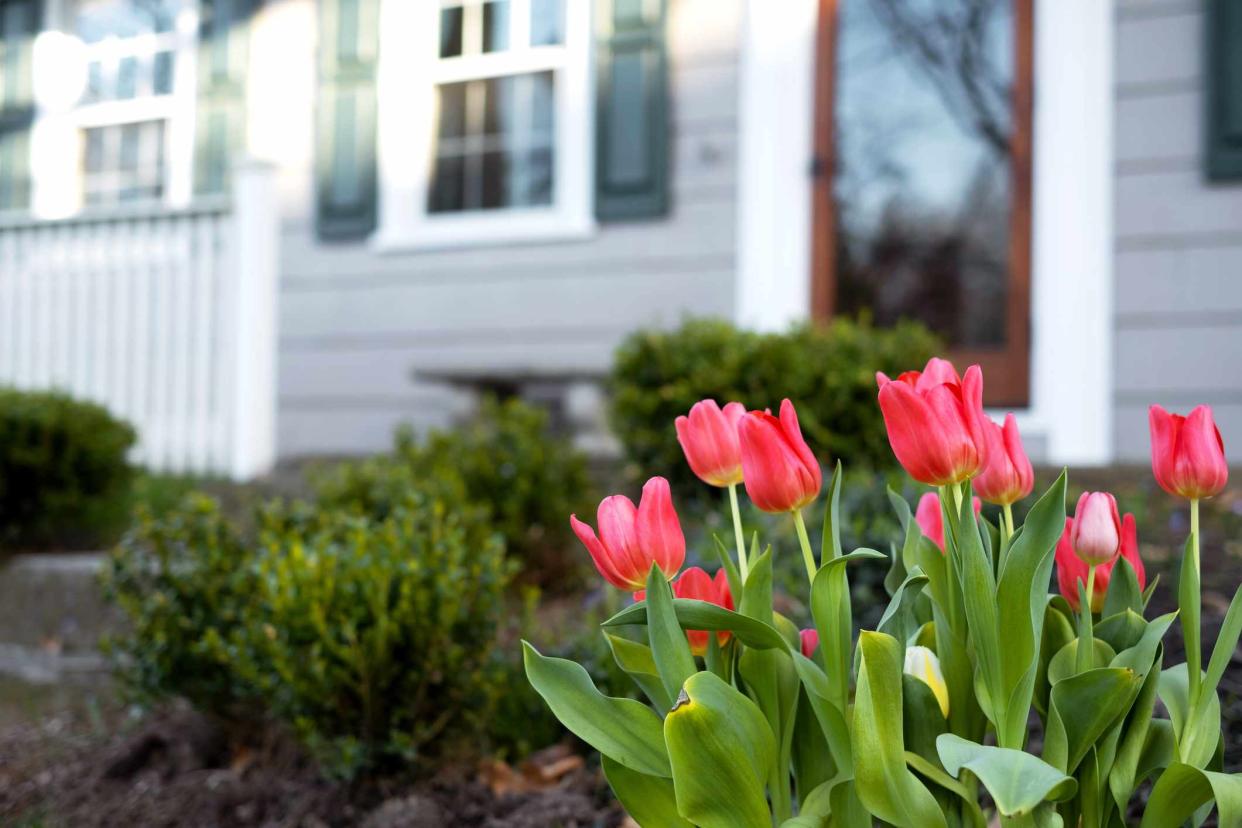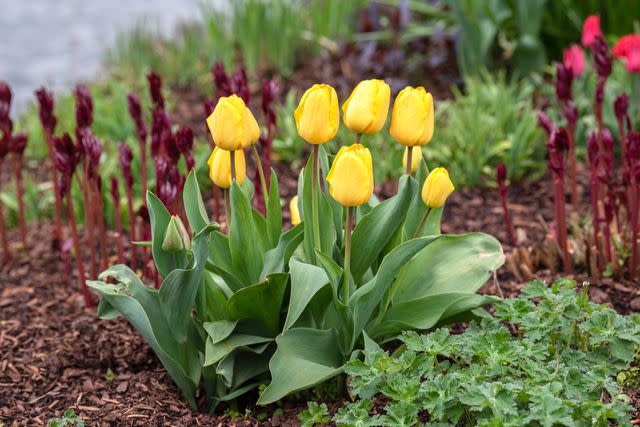Can You Still Plant Tulip Bulbs in the Spring? An Expert Says Yes

Melissa Ross / Getty Images
If you were late for the planting period last season, you might be wondering if it's possible to plant tulips in spring, and if so, how? No one wants to miss out on the vibrant display tulips provide, so it's worth knowing if bulbs can be planted and expected to bloom in a shorter period.
While fall is prime planting season, it's not impossible to plant tulip bulbs in early spring. They might bloom later since they got a tardy start, but as long as they have enough time before the hottest months arrive, they should still bloom.
We sought expert help to determine when to plant spring's biggest mascot, what time of year is best for planting, and when to expect blooms.
Why Tulips Are Best Planted in the Fall

The Spruce / Leticia Almeida
You might be completely unsure of the best season for planting tulips or have some idea of the timing but not sure why. Diane Kuthy, founder and lead gardening expert at How to Grow Everything notes it all comes down to a special process that happens within the tulip bulb.
"Tulips need a long period of cool temperatures to trigger their bulbs to flower once it gets warm," she says. "Tulip bulbs build up energy over the cool winter and use it to flower come springtime."
The bulbs must get enough cooling time to gain this energy. Planting tulips in the spring is possible, but it won't provide the best start.
"Without a long enough cool period, tulips simply won't have the energy necessary to produce flowers," Kuthy says. "This is why tulips don't do well in climates where there are not long periods of cool weather."
Want more gardening tips? Sign up for our free gardening newsletter for our best-growing tips, troubleshooting hacks, and more!
Best Time to Plant Tulips
For the most impressive results and to stretch out the period in which you can enjoy their lovely cupped petals, plant tulips around eight weeks before the first frost. Normally, this time rolls around early to mid-fall.
"This will both give your tulip bulbs time to get established while also allowing the longest possible period of cool temperatures (ideally below 55 degrees Fahrenheit) for your bulbs to build up the energy resources necessary to flower once the weather warms," Kuthy says.
3 Tips for Spring Planting Tulips
It's possible to plant tulips in the spring, but you'll want to adjust your expectations as spring bulbs will provide a different result than those that were planted last fall.
For one, flowers aren't guaranteed. Your tulips may sprout and grow beautiful leaves, but, without the appropriate amount of chill hours, there may be no blooms, according to Kuthy. You also might not see them bloom the next year either.
For the best chance of success, follow these three tips:
Plant them as early as possible: The sooner you can get the bulbs in the ground the better, according to Kuthy. They need as much chilling time as possible to generate glucose. If you put it off to the end of spring, it's better to wait until their true planting season before the year's first frost.
Give them plenty of care: Make sure you're planting the bulbs in the right soil and pay attention to their care requirements. The soil should be well-draining neutral to slightly acidic in pH. Be sure to water them, but not too much so you can avoid rotting the bulbs accidentally.
Purchase pre-chilled bulbs: For the best chance of late blooms, you can buy pre-chilled bulbs. These will typically be refrigerated for the length of time necessary for proper growth and blooming based on your USDA plant hardiness zone. This is a much more reliable way to get more flowers and a higher chance of them blooming again the following year if they're of the perennial variety.
Planting Tip
If you can wait, it is best to hold off planting tulips until autumn. It can be a little disappointing, but she says your patience will be rewarded with beautiful perennial tulip blooms for many years to come.
How to Plant Tulip Bulbs in Spring

The Spruce / Evgeniya Vlasova
If you're open to trying your hand at planting bulbs in the spring, follow these steps:
Create holes between 4 to 8 inches deep in well-draining soil in an area that gets plenty of sunlight
Drop in the bulbs. The pointed ends should face upwards.
Give the bulbs fertilizer, compost soil, and enough water without drenching (which can lead to rotting).
Depending on the bulb type, they can be left there to bloom again the next year or dug up if they're only annuals. Sometimes spring planting won't yield any blooms and it's better to dig the bulbs back out and compost them.
When Can You Expect to See Spring Blooms?
If you plant your tulip bulbs early during spring, blooms might come out later in the season or towards very early summer. That being said, Kuthy notes that you shouldn't expect blooms or very many of them at least with spring planting.
"There is a small chance that if you planted your tulip bulbs very very early in the spring they may have enough glucose storage to produce a small bloom once the weather warms up," she says. "However, this is the exception to the rule and not the normal outcome."
Frequently Asked Questions
What happens if I plant tulip bulbs in the spring?
It's possible to plant tulips in the spring, but don't expect major blooms. In many instances, they won't flower at all. If they've had enough time to chill and conditions are right, you may luck out and get a small blooming period.
How late in spring can I plant tulips?
It's best to get tulip bulbs into the ground as early as possible if you're going to try spring planting. Past mid to late spring and there is a very low chance they'll sprout at all. Once April ends, it's better to focus on other plants and wait until fall.
Can I plant potted tulips in the ground?
It is possible to plant potted tulips in the ground for a lovely annual display. Garden expert Diane Kuthy says that they'll provide a great set of blooms for that year but likely won't do so again. "The reason that most gardeners give is that the plant is too stressed from growing in an adequate potted environment to bloom again," she says.
Read Next: Are Tulips Annuals or Perennials? Here's What to Know
Read the original article on The Spruce.

